by Wallace Wyss –
De Tomaso Panteras are finally getting good money at auctions, but far less than, say, a Maserati Ghibli made in the same time frame.
This is partly because they are all too common, the most generally accepted figure being around 7,000 cars, compared to say under 1,400 Ferrari Daytonas or Maserati Ghiblis.
The second thing that hurt the value was that they are hybrids; not thoroughbred, the engines not made by the folks who made the car. No, they have an American made V8 engine, a 351 “Cleveland” which is a decent motor, but which can’t be revved too high, and has a cast iron block and cast iron heads.
Still you compare it to the Iso Grifo which has a Chevy 327 (some had larger 427s and some had 351 Clevelands), those engines were cast iron block cast iron head engines too but then you fall back on the total produced and realize Iso Grifos are a much rarer breed with about 402 made.
So next I go to build quality. The Pantera was OK but didn’t have any rustproofing. I have seen cars in Europe that were see-through (you could see right through the fenders). In America, because they were a cheap sports car some were driven in cities like Detroit in the winter and Detroit coats its streets with salt to melt the ice.
Even if you get one that’s not rusty, open the engine lid and you see a lot of gunky black goo that they covered the inner panels with so basically it looks cheap, like some industrial generator out in the sticks. Not like a sports car engine.
OK let’s go to another criterion of value: racing. There were indeed factory racing Panteras, I think about 14 SN were listed in my book De Tomaso, the Man and his Machines but the factory also could be paid to modify a street car with race equipment. If you could prove the mods on your car were made at the factory then it’s worth more than the cookie-cutter all-cars-alike models that came to the U.S.
I only know of two Pantera GT/4 factory race cars sold in the U.S., one to Warren Tope, the son of a high ranking Ford official.
SPECIAL MODELS
Now that it’s a long time since the last Pantera was made, the prices are shaking out with some showing far more worth at auctions than others. I would say the targas, of which approximately 12 were made (converted by Pavesi, a recognized coachbuilder), would be the most valuable street cars while a race car with racing history would be more valuable. Then too there’s the odd prototypes like the one called the 7X, which was owned by my former dentist in Michigan, that was a genuine prototype and then Don Delarossa, a Ford official, had one modified for himself that qualifies as a factory prototype.
The Euro models like the GT-5 and GT5-S, some brought in as gray market cars, are worth more than the US models because of rarity but you have to be careful before you buy to document it’s a real Euro, not one of the U.S. spec. models carrying repro European body style panels.
The last Panteras made, constructed long after Ford dropped importing them, were called the 200 SI cars but I would say a GT5-S or targa would outrank one of those, depending on condition.
THE PULL OF THE MANGUSTA
Making Panteras more valuable is the fact that the much rarer Mangusta (only about 400 made but far fewer left) are climbing in value and going for well over $250,000, maybe more if it is an early prototype.
The fact that one member of the De Tomaso family is recognized now as a classic brings up the reputation of the Pantera.
CUSTOMIZING HURT
But I say the marketing of Panteras in the U.S. was a failure in that they reached the wrong audience. They reached hot rodders, not those who venerate Italian design history. The buyers put on mag wheels, extra wide fender flares, aluminum intake manifolds, bigger carburetors, big bore exhaust, the whole nine yards. And then did the George Barris things—candy apple paint, pinstriping, yadda yadda. That didn’t happen to Iso Grifos which went from unknown to valuable ($400,000 and up for the small block and more than $600,000 for the big block models).
So I say that Panteras, as a model, were hijacked by the hot rodders who are only now, almost fifty years later, selling them to owners who are more historically oriented, and restoring some to stock.
So now, present day, we see a few Pantera owners realizing the profit that Iso Grifo owners did earlier, but with much less profit. Ford could have kept the De Tomaso marque, and Ghia, and used the facilities and names for marketing other Ford cars but they were too short sighted and dumped them both. Cars carrying the names De Tomaso and Ghia would be worth more now if Ford had built some veneration into the names.
That doesn’t help your reputation when your maker, or owner, dumps you. Even recently, in 2017, the De Tomaso factory contents were sold with no respect whatsoever for the history, like it was just so much rubble in a scrapyard.
Hardly the way to treat a noble marque. Ford wanted to buy some class when they ordered an Italian sports car built in Italy but treated the marque and the coachbuilder with all the respect of a Pinto.
What say you?
Let us know what you think in the Comments.
THE AUTHOR: Wallace Wyss has autographed copies of his book De Tomaso: the Man and His Machines. Contact Photojournalistpro2@gmail.com.
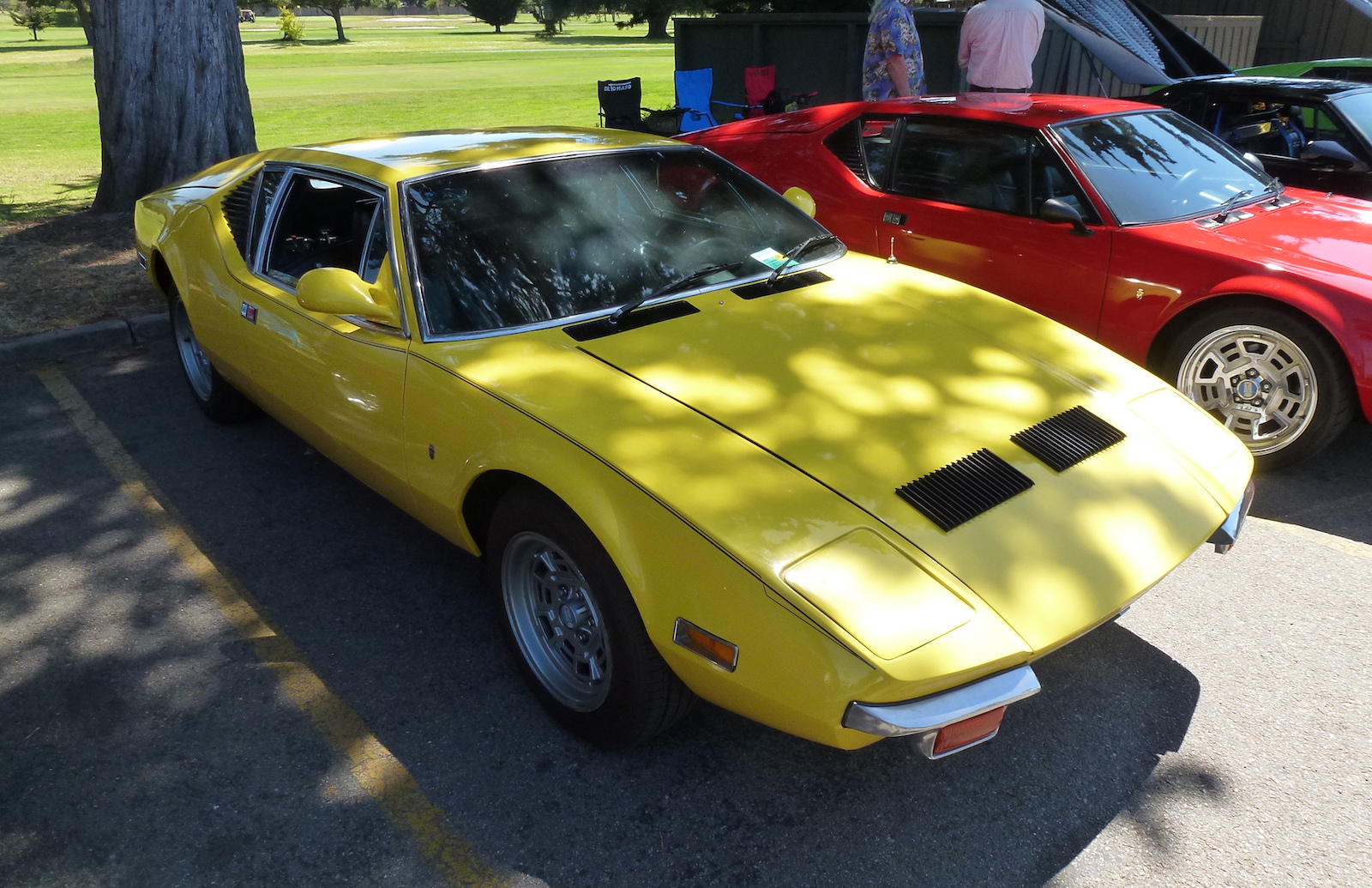
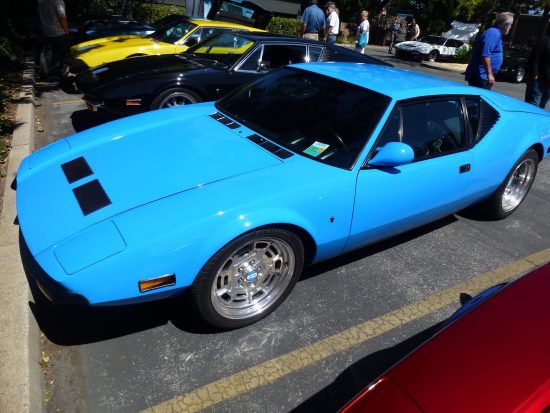
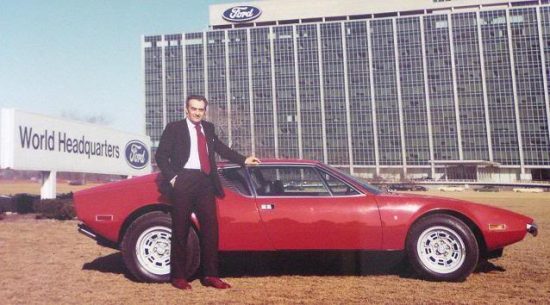
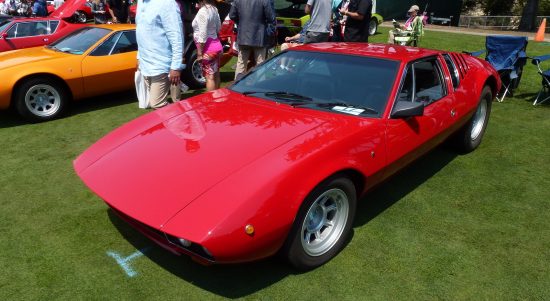


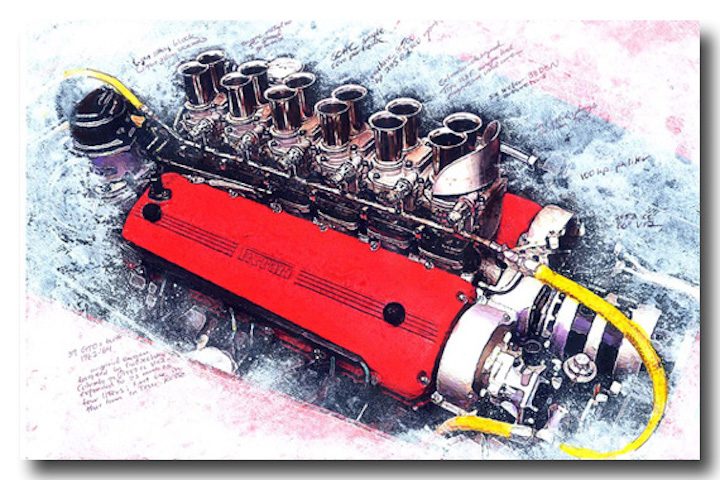

More than anything the build quality and inadequate cooling system hurt the Pantera and led to many of the modifications you see on the car today, The Ford power plant was the second knock against it, but I don’t know how much this hurt values as it opened up the car to a wide audience and is very easy to maintain. All in all they trade about where they should for the production and age of the vehicle. Well preserved cars should have a good future as it relates to values.
Chris, If you haven’t driven a Pantera, don’t be so quick to slag the 351C. It allows the Pantera to outrun most “exotics” of the 1970’s. Having all that power and torque on tap at lower revs gives the car a VERY strong feel. Not to mention that the running costs are measured in pennies per mile, not hundreds of dollars per mile. All of which is why people bought, drove and often kept them. I know a few guys who are still driving the Panteras they bought as new cars.
You only mention in passing one of the most significant factors- the Panthers was intended from the start to be substantially less expensive, as befits its less exotic specifications. It was never intended to compete with Ferrari/Lamborghini/Maserati.
Less expensive?
Ford makes a financial mistake on this, they donate a lot of $$$ on every Pantera .
It was never intended to compete Ferrari/Lamborghini/Maseratie ???
When Ford cannot buy Ferrari, they decided to build their own exotic super car.
all you can read in the books.
Simon
Off course rust was a problem, but what brand doesn’t have this problem back in the seventy’s?
There are a lot of rustfree original sheet metall cars survived.
I have seen also totally rusted Ferrari 250 SWB from that time.
The gunky black coat as you called is under the trunk Luggage well and when you open the rear trunk hood you don’t notice this black coating when the wheel is mounted.
Only need to pull this out when the car need a (cheap) service.
The trunk well Luggage F+R have more quality than the Porsche and other cars trunk upholestry .
The Si was called the New 2000 Pantera Si, not 200Si .
A Mangusta driver goes over $250k a good restored over $300k
I see that a lot of car collectors are more and more interested in unmolested Pantera’s, the early and the later build types.
Also somethimes it’s difficult to identify the different types for somebody who is new into the DeTomaso scene and is interested.
But there are some good books for sale which explain the difference between a mass production (5000 in 5 year) early Pantera and a low production GTS, GT5, GT5-S , Si later build (2000 in 18 year)
All I can say is that a car brand whith so many different models as; Formula cars , Vallelunga , Mangusta, Pantera, Longchamp, Deauville, Guara, new Mangusta, get some more respect .
And I see this is happened by the real car collectors/enthousiast already .
Simon
For all that the Pantera’s were quite commonplace compared to the Mangusta, they also drive considerably better… I think one of the things that hurt the cars was the very poor design and the lack of quality materials used in their interiors as well… I was serving my Ferrari apprenticeship when these cars were being sold new and compared to the quality of build in other exotics it was somewhat unfortunately laughable… Still in all with a little care and thoughtful restoration upgrading interior materials, they can be quite remarkable luxurious cars, and with all that brute torque certainly fun and impressive to drive.
Poor design for the interior?
All I can say is that it is much better than the Fiat dash and interior in the Ferrari’s from that time.
Simon
Usually cars that are two to three times the cost DO have better materials. You saw fewer Mangustas because only 400 were built. Their interiors are a match for most similar priced sports cars of the late 1960’s.
The Pantera is Beautiful and Rugged.
This car is/was ahead of its time as witnessed by its beautiful and everlasting design. The Pantera was Detomaso’s wonderful idea to introduce a mid-engine, all steel, totally balanced Exotic to the general public through FoMoCo. I am so very glad they ‘ALL’ had the vision to bring this thing of beauty to market.
So what is the difference between this Exotic and the other Exotics coming from the same region of Italy? Well, I can sum it up pretty easily. The Lamborghini, Ferrari, Maserati, Bizzarini, Italia, and Iso owners don’t whine if they have to repair a rust hole or engine problem. They don’t fixate on overheating because if their car is overheating they just have it repaired.
Furthermore, I will also say the owners of these other Exotics have maintained the origins of their design. If you are looking for value then don’t continue to convert your Pantera. And if you should, then plan on paying the price. You will lose money along with losing appreciation in comparison to an original copy.
The author of this article is on to something and it might behoove Pantera owners to really listen. If you have a Detomaso Pantera, keep your car original or convert it back to what it is supposed to be then watch the market respond.
Thank You for a great article on the subject, I really liked it.
I know there is a fiberglass luggge tray that lifts out, exposing the gearbox and engine. But when you lift it out the sidewalls of the inner paneling are cheap looking and covered by DeTomaso (or Ford) in a sort of black goo, looking very cheap, but maybe it was done to hide rust that began right when the cars were stored (outside, in Italy, in the rain)
The trunks were removeable for service not to show off the drivetrain. The later cars didn’t have the undercoat but were satin black paint.
Why must you lift this fiberglass whith nice upholstery material luggage tray?
Lifting only needed for service the gearbox or rebuild the clutch, which is a 5 hr. job.
The way you write this is that it looks like all the Pantera’s have big rust problems.
For me the black material is a sound deadening material.
BTW, I think that a Pantera Targa is the only car where you can store the targa roof in the trunk and have enough space for luggage in the front and rear trunk.
As an owner of several DeTomaso automobiles I can state with full confidence that with normal care and maintenance they are extremely reliable cars. They are generally quite beautiful and, considering they were (certainly in the case of the Pantera) positioned and priced WELL below some of its competitors of the day, are well equipped. The vinyl interior of the Pantera usually looks new after 45 years of light use.
In addition to the points Wally notes, I believe the primary reason that Panteras have not risen as fast or as far as others of the day has much to do with the fact that the Pantera was not marketed as exclusive but rather attainable. Collectors usually value exclusivity. MOST Pantera owners actually drive their cars frequently. Consequently they often make changes to allow the cars to perform even better and more reliably. The result is reliable cars driven and enjoyed by regular guys. The road beats a museum every day.
Coincido con Mark, los valores de los clásicos, mucho dependen de la cantidad de vehículos fabricados y que tan exclusivos ($$$$) fueron en su momento. Hay propietarios de autos clásicos, que los usan muy seguido y les introducen “mejoras”, pensando que los autos fueron fabricados “para moverse”…y hay coleccionistas, que almacenan los autos…como cuadros …”intocables”…ambos son fieles a su espíritu personal.
From Google Translate – ed.
I agree with Mark, the values of the classics, much depend on the number of vehicles manufactured and that so exclusive ($$$$) were at the time. There are classic car owners, who use them often and introduce “improvements”, thinking that the cars were made “to move” … and there are collectors, who store the cars … as paintings … “untouchables” … both are faithful to their personal spirit
I totally agree with your comments
The disrespect for this marque is abismel
Does anyone realise that De Tomaso was
An inovator and in fact produced the first
Italian mid engine sports car Yes
Before Ferrari and Lamborghini. The
Same and current configuration being used
In today’s cars including Mclaren,Koenigsegg,
Bugatti and Pagani. Car being the DeTomaso Vallelunga
A lot of mis information here, DeTomaso’s cooling problems were written about by the press but quickly fixed . Interiors were fine for sports cars of the day, so was the build quality. Panteras were a affordable exotic that can keep up with all the other Italian marques. DeTomaso IMO was not a engineering genius he inherited most of his technology from others after they were so upset, disgusted and fed up dealing with him. The Shelby P70 is a perfect example. DeTomaso screwed up the build so bad that Shelby abandoned it, then it was used to build the Magusta.
Once Pantera prices fell to the price of a Shelby GT the US Ford guy’s started purchasing Panteras and that’s when the marque went sideways. In the name of making the car drivable which it already was the Ford enthusiast started destroying the cars by customizing them. Unlike any other Italian marque Pantera owners defend their customizing. This has destroyed the marque’s reputation and value. It’s not build quality because the Mangusta was worse, it’s the basterdising of the marque. Restoring Panteras to their original build specs is how you raise the values.
I recall as a kid in high school, that my local Lincoln-Mercury dealer had a row of Panteras of different colors, front and center on their lot. I was very much a car enthusiast at that time and the general feeling among my peers was that a Pantera was somewhere between a Corvette and Ferrari in status. Probably about where they’re at today.
There’s nothing wrong with that! We need marques at all levels of pecking order. There’s no reason to dis a Pantera because it used a Ford engine or was “mass” produced. It was and remains an exciting car.
Well said Rob, your absolutely right we do need marques at all levels for enthusiasts, and honestly this is a pretty good one.